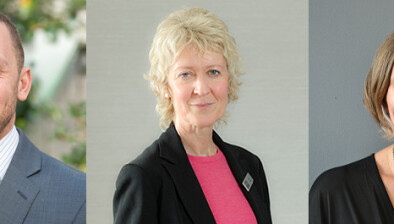Rise in children in temporary accommodation as homelessness applications fall

The number of people becoming homeless in Scotland fell by five per cent last year although the number of homeless children living in temporary accommodation increased, new figures have revealed.
Statistics from Scotland’s local authorities have shown that around 7,900 homelessness applications were received between October and December 2014, five per cent lower than in the same period in 2013.
Councils received 9059 applications for homelessness assistance from July to September 2014, a fall of about 300 compared to the same period in 2013.
During the period of April to June 2014 local authorities received 8917 applications, around 7 per cent lower than the same period in 2013.
In addition to the fall in applications, the number assessed as homeless, or likely to become homeless within two months, fell by one per cent to around 6,800.
Where contact was maintained, four out of five individuals assessed as unintentionally homeless went on to secure settled accommodation such as council housing, housing association or private lets.
This proportion has remained stable for the past seven years. In recent years, the focus has been on the housing options approach to homelessness prevention by local authorities and their partners.
Amid the positive data was a rise in the number of homeless children, figures described as “deeply concerning” by Shelter Scotland.
According to figures, 4,333 homeless children are living in temporary accommodation - an increase of 199 children compared to last year.
Research by Shelter Scotland shows that on average families and individuals spend 18 weeks in temporary accommodation but that households with children spend more time in temporary housing on average than households without children.
One in four households spend six months or longer in a home they cannot call their own.
Graeme Brown, director of Shelter Scotland, said: “The increase in the number of households in temporary accommodation is deeply concerning, particularly as they include 4,333 homeless children – an increase of 199 children compared to last year.
“To compound their hardship, we know that too many families and individuals are spending extended periods, six month or even longer, in a home they can’t call their own.
“Thousands of people across Scotland are struggling to get out of temporary accommodation and into a home of their own. At the heart of this is a chronic housing crisis with a lack of affordable accommodation across Scotland.
“We need to see at least 10,000 new socially rented homes a year to bring hope to homeless households and the 150,500 people currently on local authority housing waiting lists.”
The Scottish Federation of Housing Associations (SFHA) agreed that the chronic shortage of affordable rented housing must be addressed in order to completely eradicate homelessness.
Mary Taylor, SFHA chief executive, said: “The SFHA is pleased to see a reduction in recorded homelessness applications. However, the number of households in temporary accommodation has risen slightly.
“While we take encouragement from these statistics that homelessness prevention policies and initiatives, such as housing options, are having a positive impact, the fact remains that there is a chronic shortage of appropriate affordable rented housing across Scotland and this needs to be addressed.”
Homelessness charity Crisis said the statistics underline MSPs’ concerns over access to homelessness support.
Ann Landels, director, Crisis Scotland, said: “We welcome the overall reduction in the number of homelessness applications. It suggests that the support is being targeted more effectively at those who are in greatest need.
“However we are concerned that the figures released by the Scottish Government show an eight per cent increase over the same period in the proportion of those being assessed as intentionally homeless, the highest rate in over ten years.
“Last year a Scottish Parliamentary Committee raised concerns with the Minister about high levels of intentionality, which could be used by councils to avoid supporting some homeless people into long-term accommodation.”

Housing minister Margaret Burgess said the figures showed “significant progress” had been made in reducing homelessness in Scotland.
Mrs Burgess said: “Rather than only accepting a homelessness application councils are working with employability, mental health, money advice and family mediation services to prevent homelessness happening in the first place.
“The housing options approach, already backed by Scottish Government investment of £950,000 and a commitment of a further £150,000 for 2015/16, has helped local authorities embrace prevention of homelessness in recent years.
“We will carry on working closely with local authorities and their partners to prevent homelessness, increase the number of affordable homes and address the issue of empty homes, while looking to minimise the use of temporary accommodation.
“In some cases people have to access temporary accommodation. While the vast majority of it good quality, well-managed social housing for households waiting to move to more settled accommodation, clearly we want the time spent there to be as short as possible.
“The Scottish Government’s Housing Voluntary Grant Scheme has also allowed third sector organisations, such as Age Scotland, Scottish Women’s Aid and Shelter Scotland, to develop projects that prevent homelessness.
“In addition to this we are also investing over £1.7 billion to deliver 30,000 affordable homes during the lifetime of this Parliament, working with local authorities to build record numbers of council houses and have abolished the Right to Buy to protect up to 15,500 social homes from sale over the next ten years. Increasing the supply of housing, combined with prevention activity, will help us continue to make progress in the future.”









